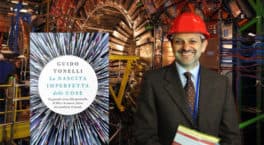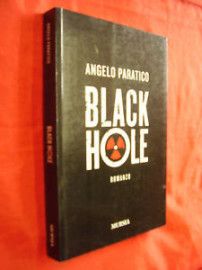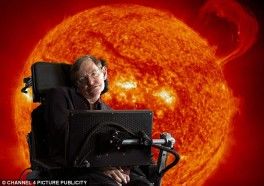![tonelli-guido-726x400[1]](https://beyondthirtynine.com/wp-content/uploads/2017/02/tonelli-guido-726x4001-264x145.jpg)
Guido Tonelli, born in 1950 in a small village perched in the mountains of Massa Carrara, is the author of an extraordinary book: The imperfect birth of things. The great race to discover God’s particle and the new physics which will change the World (La Nascita Imperfetta delle cose. La grande corsa alla particella di Dio e la nuova fisica che cambierà il mondo. Rizzoli, Milano, 2016).
Tonelli teaches Physics at the University of Pisa and besides being the recipient of several prestigious prizes – the Fundamental Physics Prize, the Enrico Fermi Prize and the medal from the President of Italy – was the leader of the team of scientists who discovered the Higgs boson at the CERN of Geneva, on the 8th of October, 2013. François Englert e Peter Higgs then received the Nobel Prize for Physics that year for their intuition. I met Guido Tonelli, together with his colleague and my fellow ‘turbighese’ Massimo Caccia, Franco Bedeschi and Catia Milardi – all brilliant physicists – in Hong Kong, just before the publication of his book and I was struck by his debonair politeness and good humor. Guido is the kind of person you would love to have as your neighbor, certainly he doesn’t look like an introvert Faustian character.
The research on the Higgs boson gathered speed at the CERN, in 1995, after a casual encounter between Tonelli and the Nobel Prize recipient Carlo Rubbia, formerly a CERN director, at the cafeteria of the center. Rubbia was curious about the program carried forward by Tonelli, Michel Della Negra and Jim Virdee and then invited him into his office to explain clearly what was cooking in the pot. Tonelli accepted the challenge, expecting a hellish hour with him, because of the well-known aggressive, take-no-prisoners, character of Rubbia. He was unable to convince him, as he concluded: “It will never work. You will create a huge hole in the water”. Later events demonstrated that, well, even Nobel Prize recipients may be wrong!
In 2008 the Lhc (Large hadron collider) was going to be switched on and a sort of mass hysteria took over the world (I was one of those people creating it – with a fiction, as well as anti-scientific, novel in the style of Angels & Demons – which was released in those days by Mursia of Milan) and, also because of it, Guido Tonelli received threatening emails. For that I am sorry but my humble opinion had always been that science is scientific only in men’s eyes not in absolute terms, and I love science-fiction novels of all kinds.
Tonelli writes that:
In the opinion of those people – A tiny black hole would be created during the first collisions and nobody will detect it. The small hungry monster will then swallow up all the matter and for a week nothing will happen, then, all in a sudden, with the increase of its mass the entire planet in a split second will be swallowed up, with lightings of a Biblical Armageddon -; In a normal world, no one would have taken them seriously, but the information society in which we live in, normal it is not.
Well, this represents a tidy sum up of my science-fiction novel, Black Hole…
The episode narrated by Tonelli in his book which I love most, because of its pathos, is presented under the title of ‘False alarms or epochal discoveries?’.
I remember to have read about it on the Washington Post while on holiday in Thailand with my wife, during the Easter of 2011.
Far away, Guido Tonelli and his family were packing for a long-scheduled holiday to Nice, France, after spending Christmas working at the CERN. But the well-deserved holiday was not going to materialize: he opened his email box and found hundreds of unexpected and unwelcomed messages, then journalists called asking for his comments, since all the papers of the world were already carrying articles about the discovery of the Higgs at the Atlas. The Lhc was divided in two experiments: Atlas and CMS (Compact Muon Solenoid), a general-purpose detector, headed by Tonelli. Although it has the same scientific goals as the ATLAS experiment, the CMS used different technical solutions and a different magnet-system design.
Guido Tonelli was forced to tell his wife that there will be no holidays and they had to unpack: just because somebody at the Atlas had let the cat out of the bag.
The leak had come from a group of researchers from Wisconsin, headed by the Hongkonghese Sau Lan Wu, a capable and expert lady who had been a child prodigy: born in Hong Kong into a very poor family, she had won a prestigious scholarship solely because of her genius and incredible capacity to work and study hard. As a young researcher, she had been part of the team which discovered the Quark Charm with Sam Ting.
Like other researchers at the CERN she was convinced that some faint signals coming from the 115 GeV in the old machine were indication of the Higgs boson. She then based her elaborations on those signals to detect the Higgs. But as wise men say: “Torture the data long enough and they will confess to anything”.
The problem was essentially that she did not submit her findings to an independent panel for verification, a common scientific procedure, somehow compulsory for such large cooperation. Suddenly the result went public and the bomb exploded.
At the CERN all the researchers jumped into action to see if really the Higgs is really decaying into two photons, as San Lau thought.
Vivek Sharma was recalled from San Diego and put to work, but then the cold shower came: on 25 April Fabiola Gianotti told the press that there were no Higgs there.
Guido Tonelli says that to be extra sure he went on with his facts-checking, ignoring the official version by Fabiola, thinking: what if San Lau is right and we are all wrong? But soon after he reached the same conclusion: San Lau had made a horrible mistake during her Easter Bump as it will become known.
They were all angry and nervous but then Sau Lan one evening came knocking at Guido Tonelli’s office, sat down in front of him and, while crying, she said she was sorry for her mistake.
Guido in turn felt sorry for her and told her to look forward not backward, knowing well that she will have to pay dearly for her mistake within the unforgiving scientific community.
I am writing this review in English and not in Italian because I think that this book should be translated and made available to the English speaking world. It is a great work, deserving more credit. The author takes the reader through the complex world of particle physics, mixing it with his personal life, while explaining complex concepts using plain words. It is an important book that all people interested in science and its influence on modern society should not miss.



